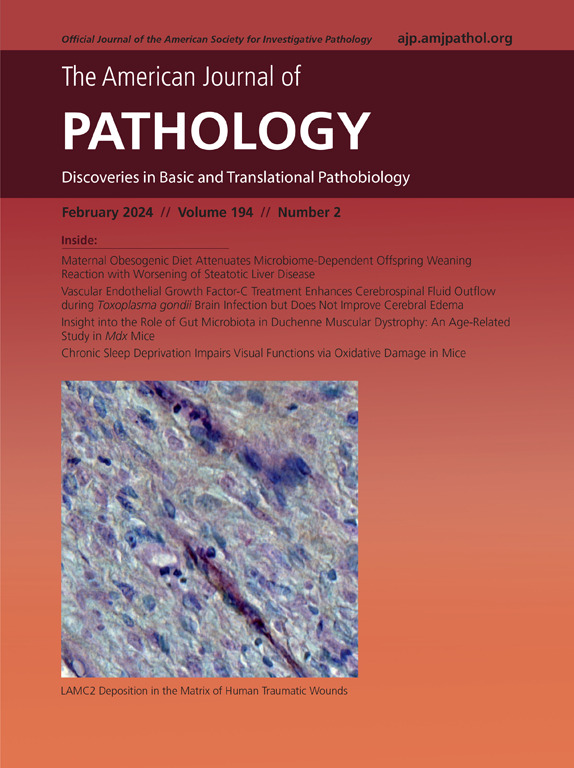Deciphering the Dialogue between Brain Tumors, Neurons, and Astrocytes
IF 3.6
2区 医学
Q1 PATHOLOGY
引用次数: 0
Abstract
Glioblastoma and brain metastases from peripheral tumors account for most cases of tumors in the central nervous system while also being the deadliest. From a structural point of view, malignant brain tumors are classically characterized by hypercellularity of glioma and vascular endothelial cells. Given these atypical histologic features, glioblastoma and brain metastases have long been considered as “foreign” entities with few to no connections to the brain parenchyma. The identification of intricate connections established between glioblastoma cells and the brain parenchyma paired with the ability of peripheral metastatic cells to form functional synapses with neurons challenged the concept of brain tumors disconnected from the central nervous system. Tumor cell integration to the brain parenchyma alters brain functionality in patients and accelerates cancer progression. Next-generation precision medicine should therefore attempt to disconnect brain cancer cells from the brain. This review encompasses recent discoveries in the mechanisms underlying these relationships and discusses the impact of these connections on tumor progression. It also summarizes the therapeutic opportunities of interrupting the dialogue between healthy and neoplastic brains.

破解脑肿瘤、神经元和星形胶质细胞之间的对话。
胶质母细胞瘤(GB)和来自周围肿瘤的脑转移瘤(BM)占中枢神经系统(CNS)肿瘤的大多数病例,同时也是最致命的肿瘤。从结构的角度来看,恶性脑肿瘤的典型特征是神经胶质瘤和血管内皮细胞的高细胞性。鉴于这些非典型的组织学特征,GB和BM长期以来被认为是与脑实质很少或没有联系的“外来”实体。发现GB细胞与脑实质之间建立了复杂的联系,同时外周转移细胞与神经元形成功能性突触的能力,挑战了脑肿瘤与中枢神经系统分离的概念。在患者中,肿瘤细胞整合到中枢神经系统会改变大脑功能并加速癌症进展。因此,下一代精准医疗应该尝试切断脑癌细胞与大脑的联系。这篇综述涵盖了这些关系背后机制的最新发现,讨论了这些联系对肿瘤进展的影响,并总结了中断健康大脑和肿瘤大脑之间对话的治疗机会。
本文章由计算机程序翻译,如有差异,请以英文原文为准。
求助全文
约1分钟内获得全文
求助全文
来源期刊
CiteScore
11.40
自引率
0.00%
发文量
178
审稿时长
30 days
期刊介绍:
The American Journal of Pathology, official journal of the American Society for Investigative Pathology, published by Elsevier, Inc., seeks high-quality original research reports, reviews, and commentaries related to the molecular and cellular basis of disease. The editors will consider basic, translational, and clinical investigations that directly address mechanisms of pathogenesis or provide a foundation for future mechanistic inquiries. Examples of such foundational investigations include data mining, identification of biomarkers, molecular pathology, and discovery research. Foundational studies that incorporate deep learning and artificial intelligence are also welcome. High priority is given to studies of human disease and relevant experimental models using molecular, cellular, and organismal approaches.

 求助内容:
求助内容: 应助结果提醒方式:
应助结果提醒方式:


